R12.1 Project-2025Sep08
Define Intent Template and Device Qualification
In this tab, you can define the intent as a device-based intent template or path-based intent template, depending on the replication mode you select.
The first step is to define intent template type and intent qualification. Follow the steps below to make these definitions.
- Seed Intent: Click Select in the Seed Intent block, then select a seed intent (for example, Multi_Hub_Spoke_Demo) from the pop-up Select Intent dialog, then its basic information will be displayed, such as intent name, description, and when it was last modified.
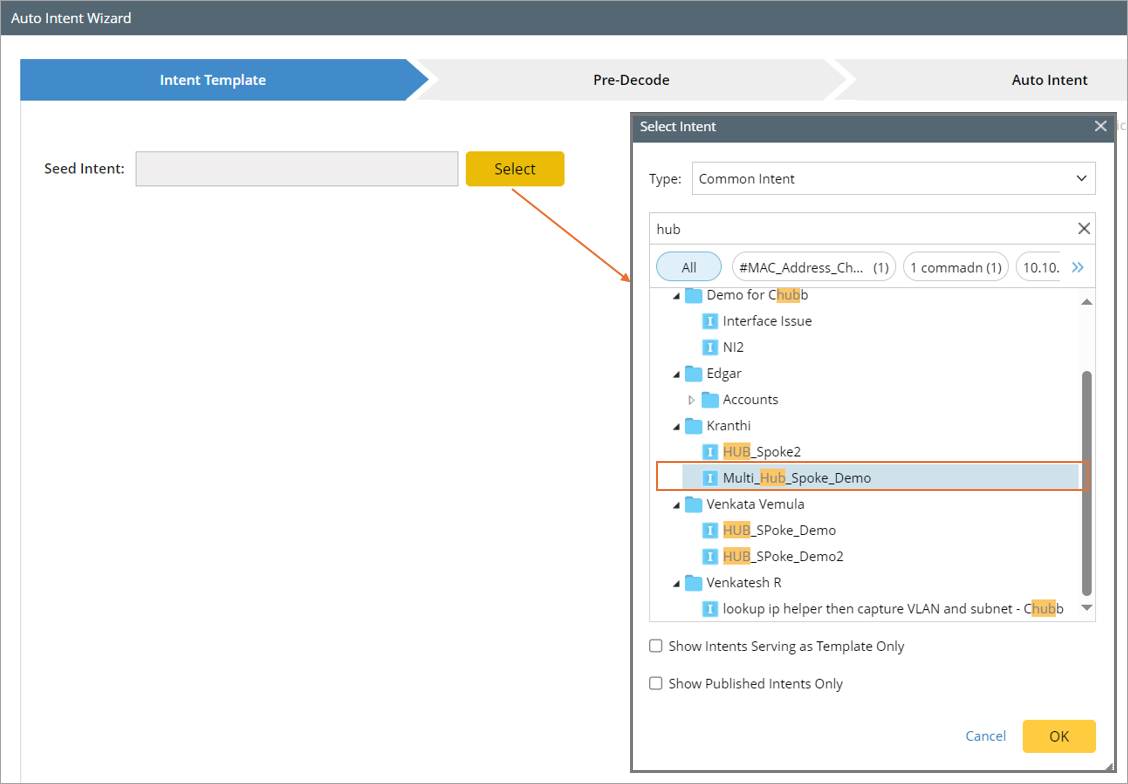

Note: The two options Show Intents Serving as Template Only and Show Published Intents Only serve to narrow the scope of intents listed.
- Intent Template for: Intent templates are separated into two types based on replication logic definition: Replicate for Devices (called normal NIT), Replicate for Paths (called Path NIT). Select from the following two options:
- Device-based Replication: Specify that the current intent template applies to device-based replication. In this case, only the devices that are defined via dynamic search and device group/site are supported.
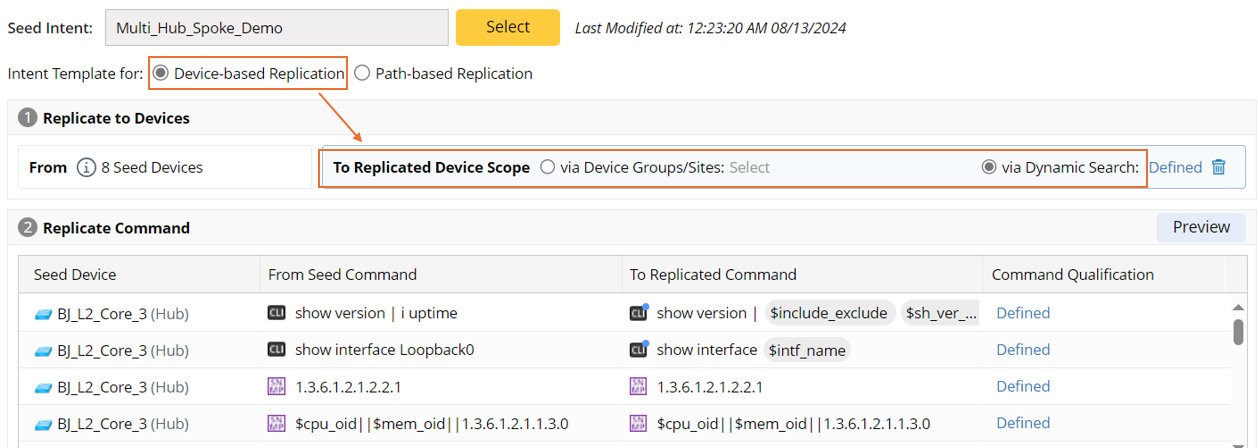

Note: From x Seed Devices is added, hover the mouse on the prompt to see the information related to the Seed Device (Seed Device/Device Type/Model Software Version). 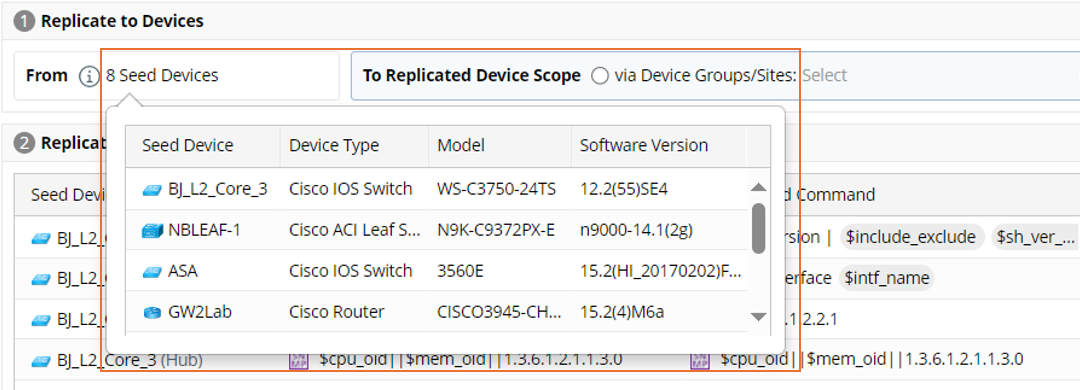
- Path-based Replication: Specify that the current intent template applies to path-based replication. In this example, only the path devices that are defined via command qualification are supported.


Note: To define the device-based qualification for the seed device, go to Replicate Settings to finish this. - Define Intent Qualification: Define the target device scope for the seed intent template to replicate intent. This field is only required when the seed intent is for device-based replication. The target devices can be defined in the following two approaches (for the detailed steps, see Replication Settings for Device-based Replication):
- Define via Device Group/Sites (when Device-based Replication is selected): Qualify devices via the defined sites or device groups.

- Define via Dynamic Search (when Device-based Replication is selected): Define the qualified devices via conditions.
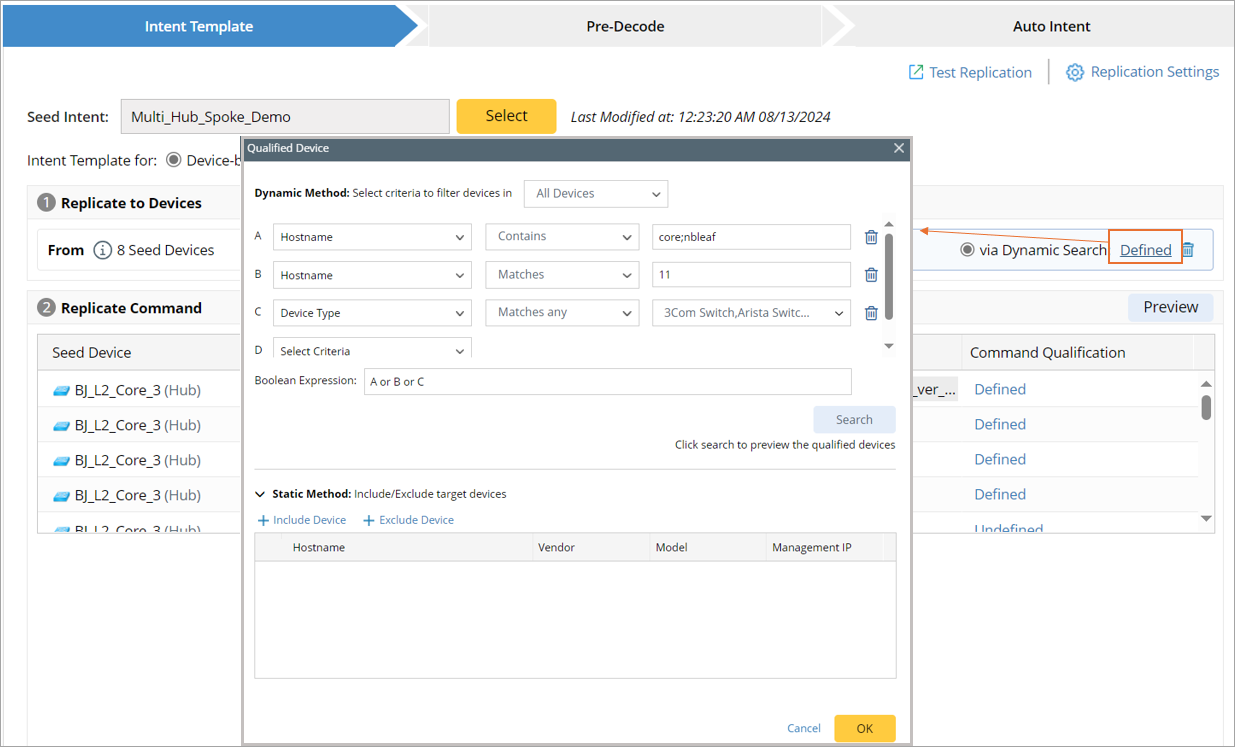
- Define Command Qualification: Command qualification serves to qualify the devices at command level. For the detailed steps, see Replication Settings for Path-based Replication.
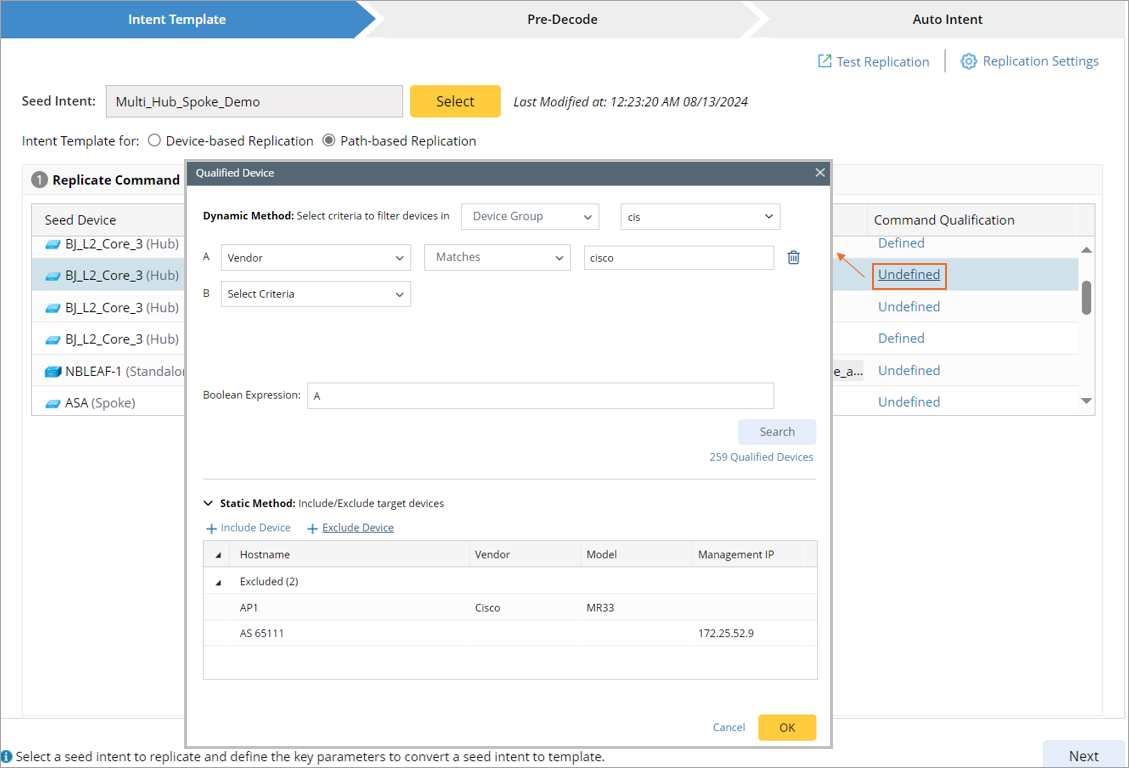
- Device-based Replication: Specify that the current intent template applies to device-based replication. In this case, only the devices that are defined via dynamic search and device group/site are supported.
- Configure Macro Variables: Define command macro variables bound to ADT to lookup data for the target device here. For more information, see Define Macro Variables for Seed Command in Auto Intent Wizard.